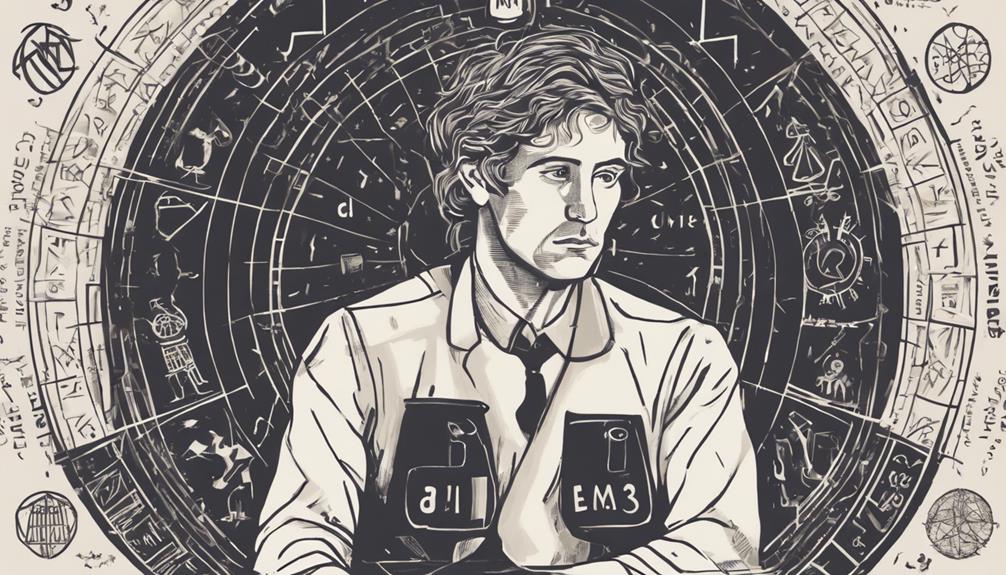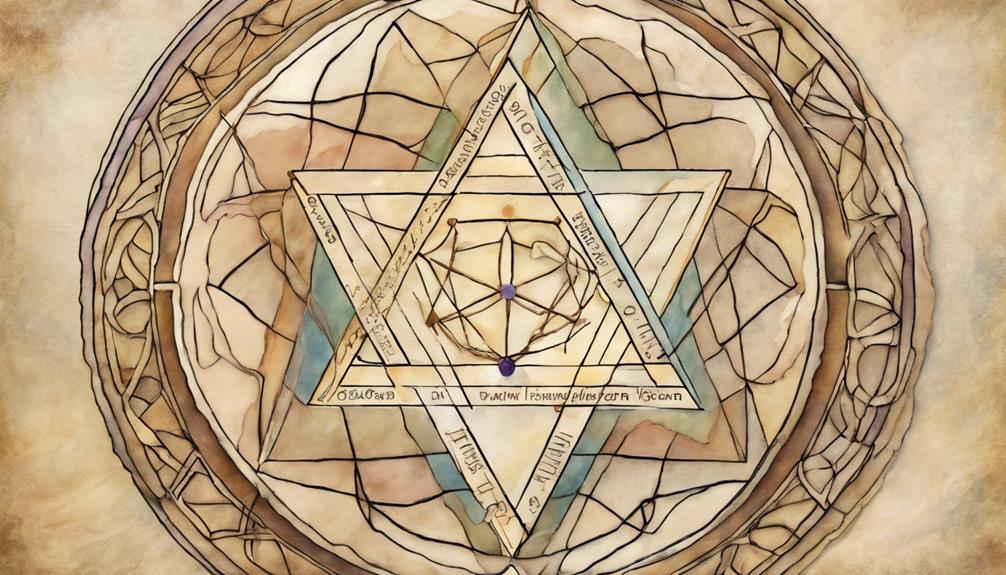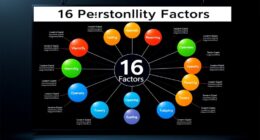Exploring the ENTJ through the lens of the Enneagram, the old adage ‘know thyself’ frequently comes to mind. Yet, what truly resides within these ambitious and tactical personalities? In what ways do their Enneagram classifications influence their perspectives and behaviors?
By exploring the depths of the ENTJ personality within the Enneagram system, we uncover not just patterns but profound insights into their motivations and growth paths. Join us on this journey of discovery as we unravel the intricate tapestry of ENTJ personalities through the lens of the Enneagram, shedding light on their complexities and potentials.
Key Takeaways
- ENTJ Enneagram overview reveals core fears, desires, and motivations.
- Growth opportunities include developing empathy and embracing vulnerabilities.
- Famous ENTJs like Steve Jobs and Margaret Thatcher exemplify ENTJ traits.
- ENTJs prioritize growth, deep discussions, and relationships fostering mutual respect.
ENTJ Enneagram Overview
In delving into the realm of the Enneagram, the ENTJ Enneagram Overview serves as a crucial entry point for understanding how ENTJs interact within this intricate personality framework. As ENTJs, our Enneagram type provides a lens through which we can explore our core fears, desires, behaviors, motivations, relationships, traits, and overall personality. The Enneagram system offers valuable insights into how we perceive the world and approach various situations.
Understanding our Enneagram type as ENTJs is like unlocking a personalized guide to our inner workings. It delves into the depths of our psyche, unveiling the driving forces behind our actions and decisions. By recognizing our Enneagram type, we gain a deeper understanding of why we behave the way we do and how we can grow and evolve as individuals.
Exploring the ENTJ Enneagram types not only enhances our self-awareness but also provides a roadmap for personal growth and development. It allows us to harness our strengths, address our weaknesses, and cultivate healthier relationships both professionally and personally.
Core Fears and Desires

With core fears and desires serving as guiding forces, ENTJ Enneagram types navigate their paths with a blend of ambition, determination, and a quest for fulfillment.
The core fears of worthlessness, pain, and control drive ENTJs to strive for success and recognition, seeking autonomy and happiness along the way. These deep-rooted fears of feeling inadequate or losing control push ENTJs to excel in their endeavors, aiming for achievements that validate their competence and abilities.
The desire for recognition fuels their pursuit of leadership roles and impactful projects where they can showcase their skills. Simultaneously, the longing for autonomy and happiness propels them to seek environments where they can exercise authority and create conditions that align with their vision of success.
These core fears and desires significantly influence the behaviors and motivations of ENTJ Enneagram types, shaping their approach to challenges and interactions with others in their quest for personal and professional fulfillment.
ENTJ Growth Opportunities
To enhance our personal and professional development, ENTJs can embrace growth opportunities by tapping into our Introverted Feeling function to better understand and express emotions. Developing this aspect of ourselves allows us to connect with our feelings on a deeper level, fostering emotional intelligence and authenticity in our interactions.
Practicing empathy is another key area for growth for ENTJs. By considering others' perspectives and emotions in our decision-making process, we can build stronger relationships and make more well-rounded choices that benefit not only ourselves but also those around us.
Furthermore, building self-awareness and acknowledging our vulnerabilities can lead to significant personal growth. Engaging in reflective practices such as journaling or therapy can help us explore our emotions and motivations more deeply, leading to a greater understanding of ourselves and our behaviors.
Seeking feedback from trusted individuals and actively working on improving our emotional intelligence are also vital steps in fostering growth opportunities for ENTJs. By continuously striving to enhance our understanding of emotions and how they impact our interactions, we can continue to evolve and develop both personally and professionally.
Famous ENTJ Personalities

Several renowned ENTJ personalities have left a lasting impact on various fields through their strong leadership skills and visionary thinking. These individuals, such as Steve Jobs, Margaret Thatcher, and Bill Gates, have excelled in business, politics, and entrepreneurship, showcasing their strategic abilities and determination. Napoleon Bonaparte and Angela Merkel are also notable ENTJs who've made significant contributions to history, demonstrating their charismatic leadership styles and forward-thinking mindset.
- Steve Jobs: Known for revolutionizing the tech industry with Apple and his innovative products.
- Margaret Thatcher: The Iron Lady of British politics, remembered for her bold leadership as the UK's first female Prime Minister.
- Bill Gates: Co-founder of Microsoft, recognized for his philanthropy and entrepreneurial success.
- Napoleon Bonaparte: A military genius who reshaped Europe through his strategic prowess and vision.
- Angela Merkel: Germany's first female Chancellor, praised for her steady leadership and pragmatic approach to governance.
Relationship Dynamics
When exploring relationship dynamics for ENTJs, it becomes evident that they prioritize growth, learning, and shared long-term goals in their interactions. In friendships, ENTJs value deep discussions that stimulate personal growth and practical problem-solving. They seek relationships that offer freedom, leadership roles, and mutual respect.
ENTJs are drawn to individuals, such as ESTJs, who share their drive for success and efficiency. Open communication is crucial for ENTJs and ESTJs to navigate their relationships effectively. Within these dynamics, ENTJs often take on leadership roles, guiding the relationship towards common objectives.
They thrive in environments where they can engage in meaningful discussions, challenge each other intellectually, and work together towards achieving ambitious goals. By fostering a partnership based on mutual respect and a shared vision, ENTJs create relationships that are both fulfilling and productive, allowing them to grow personally and professionally.
Frequently Asked Questions
How Rare Is an ENTJ A?
ENTJ-As are a rare personality type, accounting for only about 3% of the population. Their assertive nature, confidence, and proactive approach set them apart.
Driven by purpose and natural leadership qualities, they excel in adapting to change and maintaining a positive outlook.
This uniqueness makes ENTJ-As stand out in various environments, contributing a valuable perspective to any situation they encounter.
Which Enneagram Is Most Common With Entj?
The most common Enneagram type associated with ENTJs is Enneagram Type 8. This type is characterized by traits such as assertiveness, decisiveness, and strength.
ENTJs and Type 8 individuals share qualities like leadership, dominance, and a strong desire for control. This compatibility is rooted in their mutual values of determination, success, and resilience.
Understanding this connection can provide valuable insights into the dynamics of ENTJs and Type 8s in various aspects of life.
What Is the Core Desire of Entj?
Our core desire as ENTJs centers around seeking success, recognition, and achievement. We're driven by the urge to excel, be acknowledged for our accomplishments, and unleash our full potential.
Autonomy, leadership roles, and making a significant impact in our fields are crucial to us. Pursuing personal growth, continuous learning, and long-term goals is how we fulfill our craving for excellence, effectiveness, and the ability to lead with authority and confidence.
What Is the Strongest Function of Entj?
We ENTJs excel with our dominant function, Extraverted Thinking (Te). This function allows us to efficiently organize and structure our environment, make logical decisions grounded in facts, and lead effectively. Te is the powerhouse behind our assertive, decisive, and strategic nature in leadership roles.
It's through Te that we navigate challenges, plan meticulously, and drive results with precision and confidence. It's undeniably our strongest tool in the toolbox.
Conclusion
In conclusion, exploring the intricacies of ENTJs within the Enneagram system is like peeling back layers of a complex onion. By understanding their core fears, desires, and growth opportunities, we gain a deeper appreciation for their unique traits and motivations.
Just as each layer of an onion adds depth and flavor to a dish, each aspect of an ENTJ's personality adds richness and complexity to our understanding of them. Embrace the journey of discovery and connection with these fascinating individuals.
Felicity, our Author, pens in-depth articles and guides that delve into the heart of personal discovery. Her narrative-driven approach weaves together theory, practice, and personal anecdotes, making the journey of self-exploration both relatable and inspiring. Felicity’s contributions help illuminate the path for those seeking a deeper understanding of themselves and their relationships.










